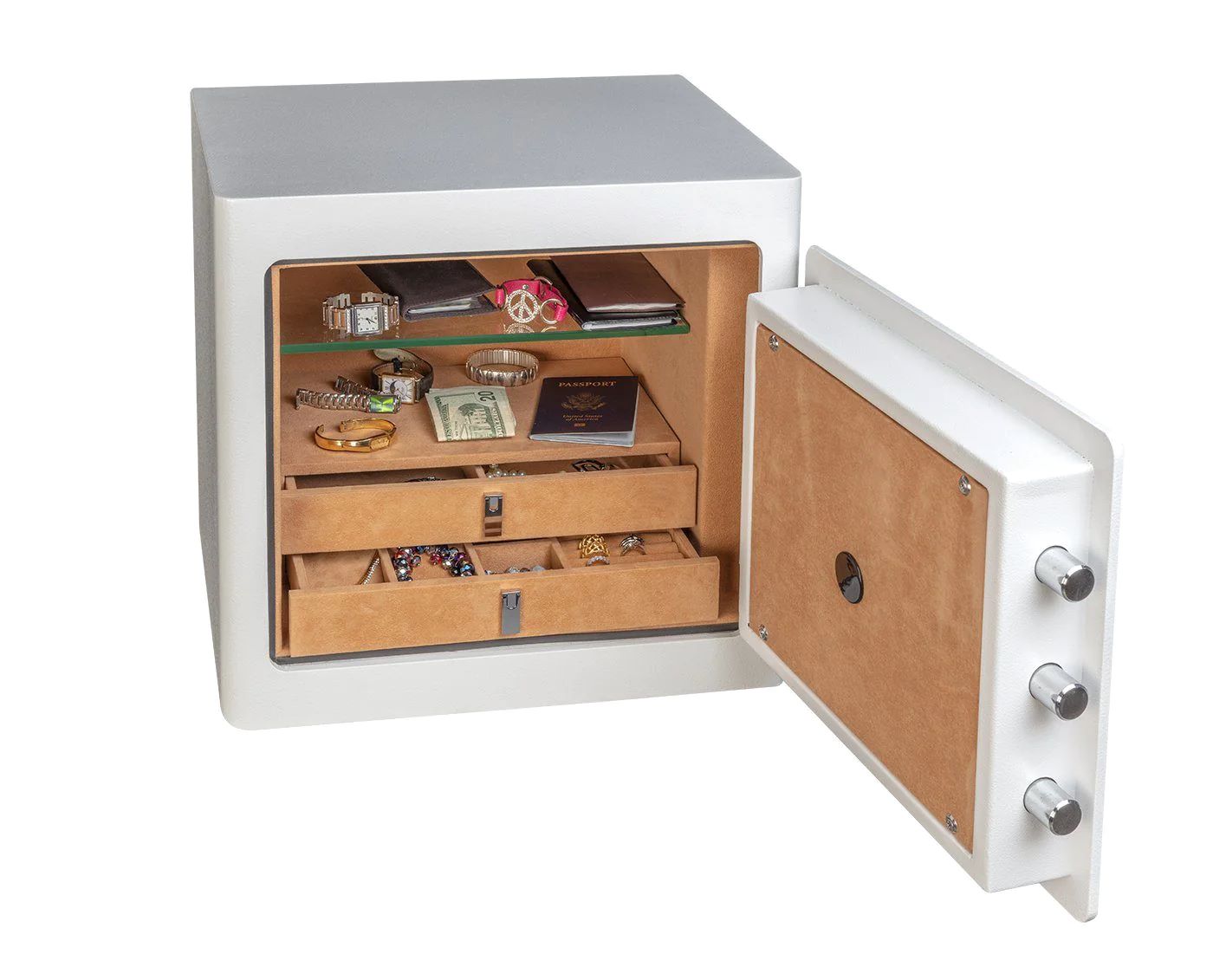

Articles
How To Store Jewelry In A Safe
Modified: February 24, 2024
Learn the best practices for storing your valuable jewelry safely. Our articles provide expert tips on keeping your precious pieces protected and organized.
(Many of the links in this article redirect to a specific reviewed product. Your purchase of these products through affiliate links helps to generate commission for Storables.com, at no extra cost. Learn more)
Introduction
When it comes to storing your precious jewelry and keeping it safe, there are a few key considerations to keep in mind. Whether you have inherited family heirlooms, collected valuable pieces over the years, or simply cherish your sentimental jewelry, taking proper care and storing them securely is of utmost importance.
In this article, we will explore the various aspects of storing jewelry in a safe and how to ensure its longevity and security. From choosing the right jewelry safe to organizing your collection and adding extra protection with insurance, we will cover all the essential steps to keep your jewelry safe and sound.
By following these guidelines, you can have peace of mind knowing that your jewelry is protected from theft, damage, and other potential risks. Without further ado, let’s delve into the world of jewelry storage and discover how to keep your prized possessions safe.
Key Takeaways:
- Invest in a high-quality jewelry safe to ensure maximum security, protection against damage, efficient organization, and peace of mind for your valuable collection.
- Utilize jewelry boxes and organizers to keep your precious pieces safe, organized, and easily accessible, while adding a touch of elegance to your dressing area.
Read more: How To Store Money In A Safe
Why Store Jewelry in a Safe
Storing your jewelry in a safe serves multiple purposes, ensuring both the security and longevity of your valuable pieces. Let’s explore some compelling reasons why investing in a jewelry safe is a wise decision.
Firstly, a jewelry safe provides the highest level of security for your precious items. Unlike conventional storage methods like jewelry boxes or drawers, a safe is specifically designed to protect against theft. They are made with sturdy construction, reinforced materials, and advanced locking mechanisms, making it nearly impossible for unauthorized individuals to gain access to your jewelry.
Secondly, a jewelry safe offers protection against damage or loss due to unforeseen events. For instance, a safe can protect your jewelry from fire, water damage, or natural disasters like floods or earthquakes. These safes are often built to withstand extreme conditions, providing a secure environment for your valuable pieces.
Furthermore, storing your jewelry in a safe helps to organize your collection effectively. A dedicated safe includes compartments, drawers, and dividers that allow you to categorize and easily access different pieces. This not only saves you time when choosing jewelry for an outfit but also helps to prevent tangling, scratches, or other forms of damage that can occur when jewelry is left loose or piled together.
In addition to security and organization, a jewelry safe can also provide a sense of peace of mind. Knowing that your precious belongings are stored securely can alleviate any anxiety or worry that may arise when leaving them unattended. This is especially important if you travel frequently or have a fluctuating household with multiple people coming and going.
Finally, storing jewelry in a safe can also be a form of protection against accidental loss or misplacement. Often, valuable jewelry is misplaced or mistakenly discarded when left in open areas. By having a designated safe for your collection, you minimize the risk of losing or accidentally disposing of your precious pieces.
In summary, storing your jewelry in a safe offers unparalleled security, protection against damage or loss, efficient organization, peace of mind, and prevention of accidental loss. By taking these precautions, you can ensure that your jewelry remains both safe and in pristine condition for years to come.
Choosing the Right Jewelry Safe
When selecting a jewelry safe, there are several factors to consider in order to ensure you choose the right one for your specific needs. Let’s explore these key considerations to help you make an informed decision.
Size: The first thing to consider is the size of the safe. Assess the amount of jewelry you have and plan for future additions. It’s important to choose a safe that is spacious enough to accommodate your current collection while allowing room for growth. Keep in mind that some larger safes may require professional installation.
Security Features: Look for safes that offer advanced security features such as a combination lock, biometric lock, or electronic keypad. These features provide an extra layer of protection and make it more difficult for unauthorized individuals to gain access to your jewelry.
Fire and Water Resistance: Opt for a jewelry safe that is fire and water resistant. Look for safes with high fire ratings, indicating the amount of time they can withstand extreme heat without damaging the contents. Water resistance is also crucial to protect your jewelry in the event of flooding or water leakage.
Construction and Material: Pay attention to the construction and material of the safe. Look for a safe made of durable materials such as steel, which offers strength and rigidity. Consider the thickness of the walls and door as well, as thicker walls provide better protection against forced entry attempts.
Anchoring Ability: Safes should have the ability to be securely anchored to the floor or wall. This enhances their resistance to being stolen or tampered with. Check if the safe comes with anchoring bolts or if you need to purchase them separately.
Interior Configuration: Evaluate the interior configuration of the safe. Look for safes with adjustable shelves, drawers, or compartments to effectively organize and separate your jewelry. Velvet or felt lining is also ideal, as it helps prevent scratches and damage to your valuable pieces.
Price and Brand Reputation: Consider your budget when selecting a jewelry safe. While it’s important to invest in a high-quality safe, make sure it aligns with your financial capabilities. Additionally, research reputable brands known for their reliable and secure safes.
Warranty: Check if the safe comes with a warranty. A warranty provides peace of mind in case of any manufacturing defects or issues that may arise. Read the terms and conditions of the warranty carefully to fully understand what it covers.
Professional Installation: If necessary, consider professional installation for larger or complex safes. This ensures proper placement and anchoring, maximizing the security offered by the safe.
By considering these factors, you can choose a jewelry safe that meets your specific requirements in terms of size, security features, fire and water resistance, construction material, anchoring ability, interior configuration, price, brand reputation, warranty, and professional installation. Investing in the right jewelry safe will provide you with peace of mind knowing that your precious belongings are well-protected.
Placement of the Jewelry Safe
Deciding on the ideal placement for your jewelry safe is an important consideration to ensure both security and accessibility. Here are some key factors to keep in mind when determining the placement of your jewelry safe.
Accessibility: Choose a location that allows convenient and easy access to your jewelry safe. Consider areas of your home that you frequently visit or where you often get ready. This could be your bedroom, dressing room, or closet. Placing the safe in a location that is easily reached will encourage you to use it regularly and keep your jewelry organized.
Discretion: It’s essential to strike a balance between accessibility and discretion. While you want your safe to be easily accessible, you also want to keep it hidden from prying eyes. Avoid placing the safe in plain sight or in obvious locations that may attract attention. Consider selecting a discreet spot that provides an additional layer of security.
Security: Opt for a location that maximizes the security of your jewelry safe. Avoid placing it near windows or doors, as these areas may be targeted by potential thieves. Instead, look for areas that are relatively hidden or protected, such as a walk-in closet or a concealed cabinet. Additionally, ensure that the safe is not easily visible when the room is in use or when guests are present.
Structural Support: Consider the structural support of your chosen location. A jewelry safe can be heavy, especially when filled with jewelry and other valuables. Ensure that the floor or wall where you plan to install the safe can support its weight. If necessary, consult a professional to determine if any additional support is required.
Anchoring Options: If your safe comes with anchoring options, make use of them. Anchoring the safe to the floor or wall provides an extra layer of security and prevents potential thieves from easily removing or tampering with it. Follow the manufacturer’s instructions or consult a professional to ensure proper and secure anchoring.
Climate Considerations: Take into account the climate of your chosen location. Extreme temperature fluctuations or high humidity levels can potentially damage your jewelry. Consider placing the safe in an area with controlled temperature and humidity, such as a temperature-controlled room or a closet with a dehumidifier.
Insurance Requirements: Review the requirements of your jewelry insurance policy, if any. Some insurance policies may have specific guidelines on where and how the jewelry should be stored. Adhering to these guidelines not only ensures maximum coverage but also provides an additional layer of protection.
Privacy: Consider the level of privacy in your chosen location. If the safe will be accessed by multiple individuals, such as family members or house staff, ensure that the location maintains privacy and confidentiality. This helps prevent unauthorized access to your jewelry collection.
By considering accessibility, discretion, security, structural support, anchoring options, climate considerations, insurance requirements, and privacy, you can determine the optimal placement for your jewelry safe. Remember, the goal is to strike a balance between accessibility and security while keeping your precious jewelry well-protected.
Organizing Your Jewelry
Proper organization of your jewelry is crucial to ensure that each piece is easily accessible, well-protected, and free from damage. Here are some practical tips to help you effectively organize your jewelry collection.
Sort and Categorize: Begin by sorting your jewelry into categories. This could include separating necklaces, bracelets, earrings, rings, and other types of jewelry. Within each category, further sort them by style, material, or occasion. This will make it easier to find specific pieces when you need them.
Use Jewelry Boxes or Trays: Invest in jewelry boxes or trays with compartments to store your jewelry. These containers provide individual spaces for each piece, preventing tangling and reducing the risk of scratches or damage. Look for boxes with cushioned interiors or lined with soft fabric to offer extra protection.
Dividers and Inserts: Utilize dividers and inserts within your jewelry boxes to create separate compartments for different types of jewelry. This will help to keep your pieces organized and prevent them from getting entangled. Dividers also ensure that delicate or valuable items are stored separately to minimize the risk of damage.
Hanging Solutions: Consider using hanging solutions to store your necklaces and bracelets. This could be a wall-mounted jewelry organizer with hooks, a hanging closet organizer, or a standalone jewelry tree. Hanging your necklaces and bracelets helps prevent them from tangling and also makes it easier to see and choose which piece to wear.
Drawer Inserts: If you prefer to store your jewelry in drawers, invest in drawer inserts or organizers. These inserts have different-sized compartments and sections to keep your jewelry separate and prevent them from shifting around as you open and close the drawers.
Labeling: Consider labeling your jewelry boxes or compartments to further assist with organization. Labeling can be done using small tags, sticky notes, or even with a labeling machine. This will save you time in finding specific pieces and ensure that you keep your jewelry collection well-organized.
Frequently Used Pieces: Keep your most frequently used pieces easily accessible. Consider having a small jewelry tray or stand on your dressing table or in your bathroom to hold your everyday jewelry. This way, you can quickly grab what you need without rummaging through your entire collection.
Rotate Your Collection: As you accumulate more jewelry, it’s essential to rotate your collection. Store pieces that you wear less often in a separate box or tray and swap them with other pieces from time to time. This not only keeps your collection fresh but also ensures that all your jewelry gets regular use.
Regular Maintenance: Take the time to clean and inspect your jewelry regularly. Clean each piece according to its specific care instructions to keep it looking its best. Inspect for loose stones, missing clasps, or any signs of wear and tear. Repair or replace any damaged pieces to prevent further damage or loss.
By following these tips, you can effectively organize your jewelry collection, making it easier to find specific pieces, reducing the risk of damage, and ensuring that your jewelry remains in pristine condition for years to come.
Store your jewelry in a secure safe with a combination lock or biometric access. Use a jewelry organizer to keep pieces separate and prevent tangling or scratching. Consider adding a dehumidifier to the safe to prevent moisture damage.
Read more: How To Store Cash Safely
Using Jewelry Boxes and Organizers
Investing in high-quality jewelry boxes and organizers is key to keeping your precious pieces safe, organized, and in pristine condition. Let’s explore some tips on how to effectively utilize jewelry boxes and organizers.
Choose the Right Size: Select jewelry boxes and organizers that are spacious enough to accommodate your collection. Consider the size and quantity of your jewelry pieces to determine the appropriate size. It’s better to opt for a slightly larger box to allow for future additions.
Separate Compartments: Look for jewelry boxes and organizers with separate compartments or dividers. These compartments keep your pieces organized, preventing tangling, scratching, or damage. Choose boxes with compartments suitable for each type of jewelry, such as slots for rings, hooks for necklaces, or cushioned compartments for delicate pieces.
Lined Interiors: Consider jewelry boxes and organizers with soft, lined interiors. Velvet or felt lining provides a gentle cushioning for your jewelry, preventing scratches and damage from rough surfaces. The lining also adds a touch of luxury to your storage solutions.
Utilize Additional Inserts: Some jewelry boxes and organizers come with additional inserts or trays. These inserts can be used to segregate and organize your jewelry further. For example, you can use ring rolls to keep rings separate and upright, or small trays for earrings or brooches.
Secure Closures: Look for jewelry boxes and organizers with secure closures. These closures can be locks, zippers, or clasps that ensure your jewelry remains safely inside the box. This is particularly important if you plan to travel with your jewelry or if you have curious children or pets at home.
Travel-Friendly Options: Consider purchasing travel-friendly jewelry boxes or organizers. These are usually compact, lightweight, and have secure closures to protect your jewelry while on the go. Look for designs that have specific compartments for different types of jewelry and are easy to pack in your suitcase or carry-on bag.
Showcase and Display Options: Some jewelry boxes are designed to showcase and display your prized pieces. These may include glass or transparent lids or open tray-style organizers. These options are perfect for displaying your jewelry on your vanity or dresser while also providing easy access to your favorite pieces.
Customize and Personalize: Get creative and customize your jewelry boxes and organizers to suit your personal style. Add decorative elements such as ribbons, labels, or decorative paper to the exterior or interior. This not only personalizes your storage solutions but also adds a touch of uniqueness to your jewelry collection.
Maintain and Clean: Regularly cleaning and maintaining your jewelry boxes and organizers is essential. Use a soft brush or cloth to remove any dust or debris from the surfaces. Avoid using harsh chemicals or abrasive materials that can potentially damage the finish of the box. Ensure that the interiors are clean and free from any residue or particles that may transfer onto your jewelry.
By following these tips, you can effectively utilize jewelry boxes and organizers to keep your precious jewelry safe, organized, and easily accessible. These storage solutions not only protect your jewelry from damage but also add a touch of elegance to your dressing area.
Securing Valuable and Delicate Pieces
Valuable and delicate jewelry pieces require extra care and attention to ensure their security and longevity. Here are some essential tips to help you protect and secure your most valuable and delicate jewelry:
Separate Storage: Keep your valuable and delicate pieces separate from other jewelry. This prevents them from getting scratched, tangled, or damaged by friction with other pieces. Use individual compartments, soft pouches, or small jewelry bags to store these special pieces separately.
Lockable Displays: Invest in lockable displays or cases to showcase your valuable jewelry pieces. These displays not only add an aesthetic appeal but also provide a secure way to exhibit your treasures. Look for displays with built-in locks to prevent unauthorized handling or accidental damage.
Safe Deposit Box: For ultimate security, consider storing your most valuable and sentimental jewelry pieces in a safe deposit box at a bank or private vault. These specialized storage facilities offer high levels of security, protection against theft, and controlled environments to prevent damage from elements like fire or water.
Avoid Extreme Conditions: Protect your delicate jewelry pieces from extreme conditions. Keep them away from exposure to direct sunlight, high humidity, heat, or extreme cold temperatures. Extreme conditions can alter the appearance of gemstones, cause discoloration, or damage delicate metals and settings.
Check Settings and Prongs: Regularly inspect the settings and prongs of your valuable jewelry. Loose or damaged prongs can lead to the loss of gemstones. Take them to a professional jeweler for regular inspections, cleaning, and maintenance. Promptly repair any loose or damaged settings to prevent further damage or loss.
Insurance Coverage: Consider obtaining insurance coverage for your valuable jewelry pieces. This provides financial protection in the event of theft, loss, or damage. Take inventory of your valuable jewelry and consult with an insurance provider to determine the appropriate coverage for your collection.
Photographic Documentation: Create a photographic record of your valuable jewelry pieces. Take detailed and high-resolution photographs of each piece, capturing the unique features and important aspects. This documentation serves as evidence for insurance claims or identification if the jewelry is lost or stolen.
Alarm Systems: Install a reliable and modern alarm system in your home, particularly if you have a substantial collection of valuable jewelry. This provides an added layer of security and acts as a deterrent to potential burglars. Ensure that your alarm system is regularly maintained and connected to a reliable monitoring service.
Be Discreet: Avoid drawing unnecessary attention to your valuable jewelry pieces when outside of your home. Keep them concealed and avoid discussing them in public. This helps prevent potential theft or targeting by individuals who may be aware of your valuable jewelry collection.
Professional Appraisals: Get your valuable jewelry professionally appraised by a certified gemologist or a trusted jeweler. An appraisal provides an accurate value assessment for insurance purposes and ensures that your jewelry is adequately protected. Update the appraisals periodically to reflect any changes in value.
By following these tips, you can securely store and protect your valuable and delicate jewelry pieces, ensuring their longevity and preserving their beauty for years to come.
Adding Extra Protection with Insurance
Insurance plays a crucial role in adding an extra layer of protection to your valuable jewelry collection. By obtaining jewelry insurance, you can have peace of mind knowing that your precious pieces are financially protected against theft, loss, or damage. Here are some important points to consider when adding extra protection with jewelry insurance.
Evaluation and Appraisal: Before obtaining jewelry insurance, it’s essential to have your pieces evaluated and appraised by a certified gemologist or a trusted jeweler. A professional appraisal provides an accurate assessment of the value of your jewelry pieces, which is used as the basis for insurance coverage.
Choose the Right Policy: Take the time to research and compare different insurance policies specifically designed for jewelry. Look for policies that provide comprehensive coverage, including protection against theft, loss, damage, and even disappearance. Consider the coverage limits, deductibles, and any specific conditions or exclusions that may apply.
Agreed Value Coverage: Opt for an insurance policy that offers agreed value coverage rather than actual cash value coverage. Agreed value coverage guarantees that you will be paid the agreed-upon value in the event of a covered loss, whereas actual cash value coverage takes into account depreciation over time.
Schedule Your Jewelry: To ensure adequate coverage for your valuable pieces, consider scheduling your jewelry separately under the insurance policy. This allows you to specifically list each item, along with its appraised value, so that it is covered explicitly and individually. Scheduling provides broader coverage and may also offer additional protection, such as coverage against accidental damage.
Know the Coverage Limits: Understand the coverage limits of your policy. Some insurance policies have sub-limits that apply to certain categories of jewelry, such as watches, loose gemstones, or antique pieces. Be aware of any sub-limits and ensure that your coverage adequately meets the value of your collection.
Keep Documentation: Keep all documentation related to your jewelry, including appraisals, purchase receipts, certificates, and photographs. These serve as evidence of ownership and support your insurance claims in the event of a loss or damage. Store copies of these documents in a safe and secure location outside of your home, such as in a safety deposit box.
Regular Re-Evaluation: Periodically re-evaluate your jewelry collection and update your insurance coverage accordingly. The value of certain pieces may appreciate over time. Keep your insurance provider informed of any changes in value and obtain updated appraisals to ensure accurate coverage.
Understand Policy Conditions: Read and have a clear understanding of the conditions and requirements of your insurance policy. This includes any security measures that may be necessary, such as minimum safety standards for home security systems or requirements for storing your jewelry in a safe or a locked location.
Notify Your Insurance Provider: In the event of a loss, theft, or damage to your jewelry, notify your insurance provider immediately. Follow their instructions on filing a claim, providing the necessary documentation, and working with appraisers or other professionals as required. Prompt reporting ensures a smoother claims process.
Remember, insurance is an important part of protecting your valuable jewelry collection. By obtaining the right jewelry insurance policy and following these guidelines, you can enjoy your jewelry with the peace of mind that comes from knowing it is financially protected.
Maintenance and Regular Check-ups
Maintaining and regularly checking your jewelry is essential to ensure its longevity, beauty, and functionality. By taking proper care of your jewelry and addressing any issues promptly, you can prevent damage, minimize the risk of loss, and keep your pieces in excellent condition. Here are some key maintenance tips and the importance of regular check-ups:
Cleaning: Regularly clean your jewelry to remove dirt, oils, and other residues that can dull its sparkle or cause damage. Follow the cleaning instructions specific to each type of jewelry, using appropriate cleaning solutions and soft brushes or cloths. Avoid harsh chemicals or abrasive materials that can potentially damage the precious metals or gemstones.
Inspection: Regularly inspect your jewelry for any signs of wear and tear, loose stones, or damaged clasps. Pay attention to the prongs and settings, as they can become worn over time. Inspect for any discoloration, scratches, or tarnish on the metal surfaces. Promptly address any issues by taking your jewelry to a professional jeweler for repair or maintenance.
Prong Retipping and Rebuilding: Prongs on rings, earrings, or pendants can wear down or become loose over time. It’s important to have them inspected and, if needed, retipped or rebuilt by a professional jeweler. This ensures that the stones are securely held in place and minimizes the risk of them falling out or getting damaged.
Polishing and Refinishing: Over time, the surfaces of your jewelry may become scratched or dull. Professional polishing and refinishing can restore the shine and lustre, bringing your jewelry back to its original glory. This process involves buffing the surfaces to remove scratches and blemishes, as well as refinishing the metal to enhance its appearance.
Ring Resizing and Re-Soldering: If your rings become too tight or loose, consult a professional jeweler for resizing. Resizing ensures a proper fit and prevents discomfort. Additionally, if you have rings with multiple bands or intricate designs, re-soldering may be necessary to ensure the integrity of the piece and prevent damage.
Preventative Maintenance: Consider having your valuable jewelry professionally inspected and serviced annually or biannually. This preventative maintenance allows a jeweler to identify and address any potential issues before they escalate. It helps to maintain the beauty, functionality, and value of your jewelry over time.
Restringing and Reknotting: Pearl necklaces and bracelets, as well as other bead-based jewelry, may require restringing and reknotting to ensure their durability and security. Over time, the cord or thread may weaken, and knots may loosen. Replacing the old cord and reknotting the strands help to prevent breakage and loss of beads.
Storage and Care: Pay attention to how you store and care for your jewelry. Store each piece separately in soft pouches, jewelry boxes, or containers to prevent scratches or tangling. Avoid exposing jewelry to harsh chemicals, perfume, or lotions. Remove your jewelry before engaging in physical activities or household chores that may pose a risk of damage.
Check Insurance Coverage: Regularly review your jewelry insurance coverage. Ensure that your policy adequately reflects any changes in the value of your collection or newly acquired pieces. Update your policy as necessary to ensure comprehensive coverage and protection against potential risks.
Regular maintenance and check-ups are vital to preserving the beauty and integrity of your jewelry. By following these tips and seeking professional assistance when needed, you can enjoy your cherished pieces for a lifetime and even pass them down as heirlooms with pride.
Read more: How To Store Pearls Safely And Effectively
Conclusion
Ensuring the safety and longevity of your jewelry collection requires careful consideration and proactive measures. By storing your jewelry in a secure safe, organizing it effectively, and adding extra protection through insurance, you can have peace of mind knowing that your precious pieces are well-protected.
Choosing the right jewelry safe involves considering factors such as size, security features, fire and water resistance, construction material, anchoring ability, interior configuration, price, brand reputation, warranty, and professional installation. This ensures that your safe meets your specific needs and provides maximum security for your jewelry.
Moreover, the placement of your jewelry safe is crucial in maintaining both accessibility and discretion. Select a location that offers easy access while keeping the safe hidden from prying eyes. Ensure that the chosen spot provides structural support, privacy, and protection from extreme conditions.
Organizing your jewelry in dedicated boxes and organizers helps prevent tangling, scratching, and damage. Utilize separate compartments, dividers, and inserts to categorize and store your jewelry effectively. Consider hanging solutions for necklaces and bracelets, drawer inserts for easy access, and labeling for efficient retrieval.
Valuable and delicate jewelry pieces require extra care and attention. Separate storage, lockable displays, safe deposit boxes, and insurance coverage provide added protection for these valuable pieces. Regular maintenance, check-ups, and professional appraisals help to identify and address any issues before they escalate.
By adding extra protection through insurance, you can safeguard your jewelry against theft, loss, or damage. Ensure that your jewelry is appraised, choose the right policy with adequate coverage, and understand policy conditions and requirements. Keep documentation, notify your insurance provider promptly in case of loss or damage, and perform regular evaluations and updates.
Regular maintenance, cleaning, inspection, and preventative measures help to keep your jewelry in excellent condition. Professional services such as cleaning, polishing, resizing, restringing, and refinishing can restore the beauty and functionality of your precious pieces. Paying attention to storage, care, and following instructions helps to prevent damage and maintain the longevity of your jewelry.
In conclusion, by investing in a secure and suitable jewelry safe, organizing and caring for your jewelry, adding extra protection with insurance, and performing regular maintenance and check-ups, you can enjoy your valuable and sentimental jewelry collection with peace of mind, knowing that it is not only stylish but also well-protected and cherished for years to come.
Frequently Asked Questions about How To Store Jewelry In A Safe
Was this page helpful?
At Storables.com, we guarantee accurate and reliable information. Our content, validated by Expert Board Contributors, is crafted following stringent Editorial Policies. We're committed to providing you with well-researched, expert-backed insights for all your informational needs.
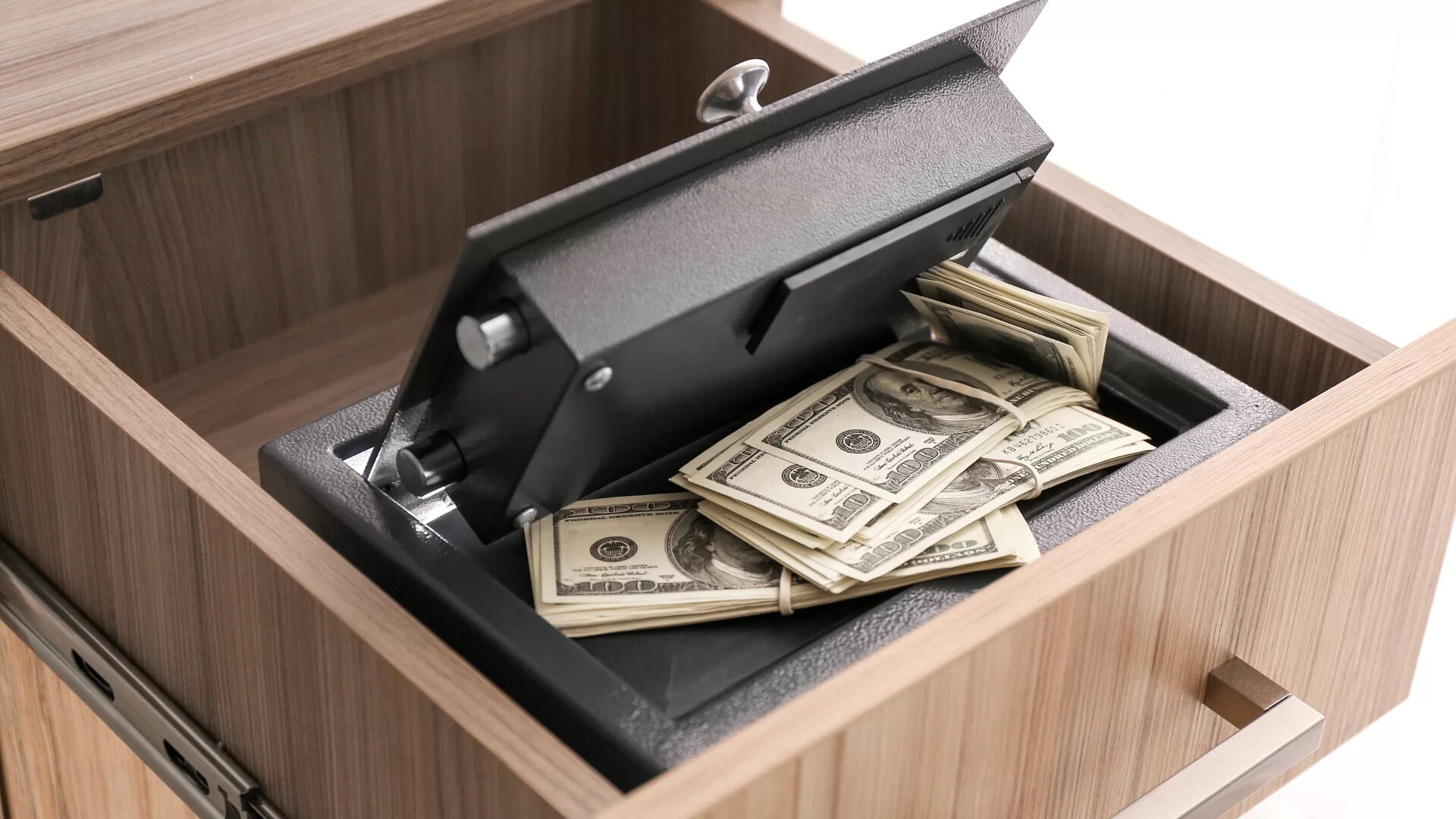
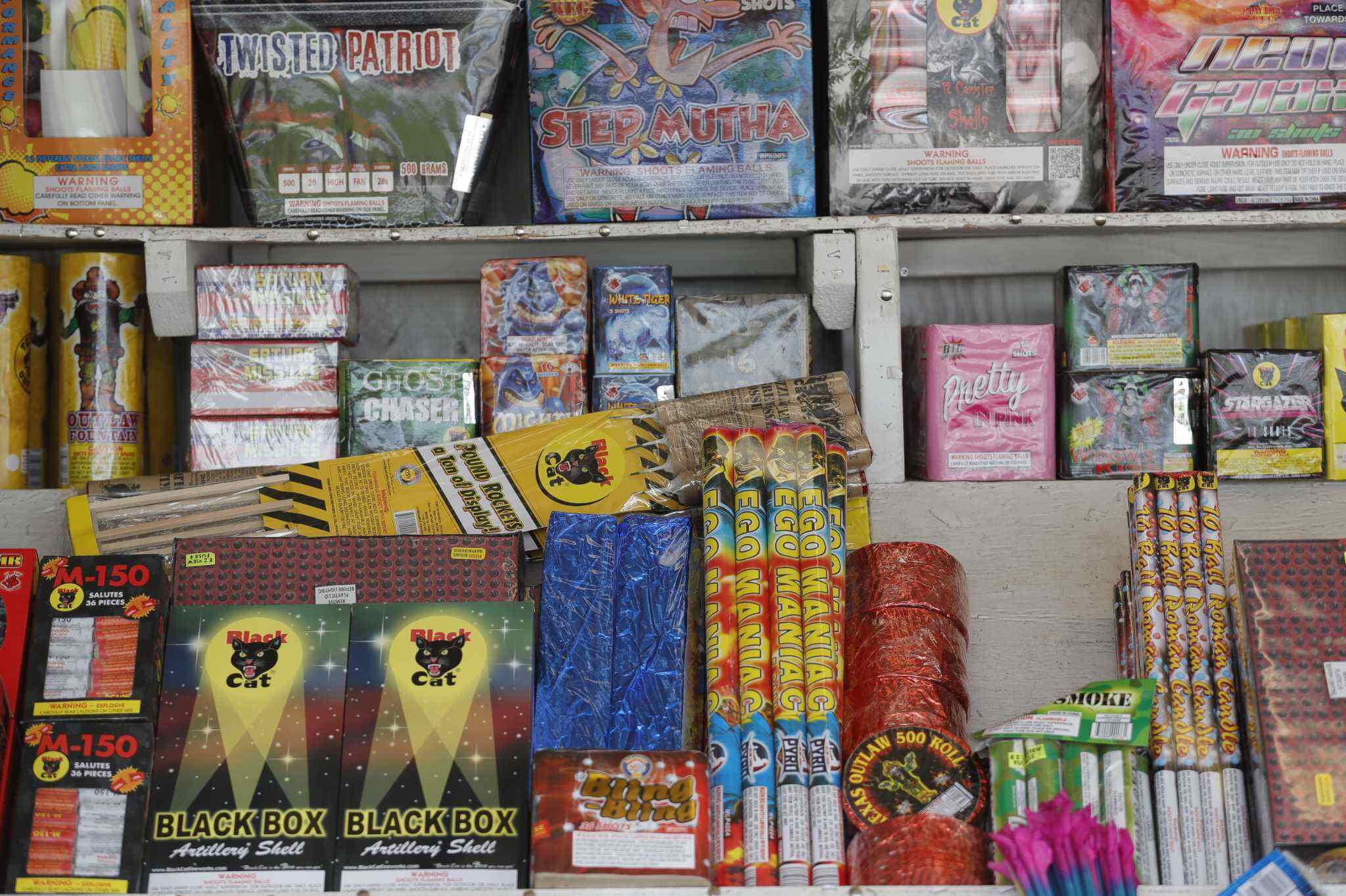
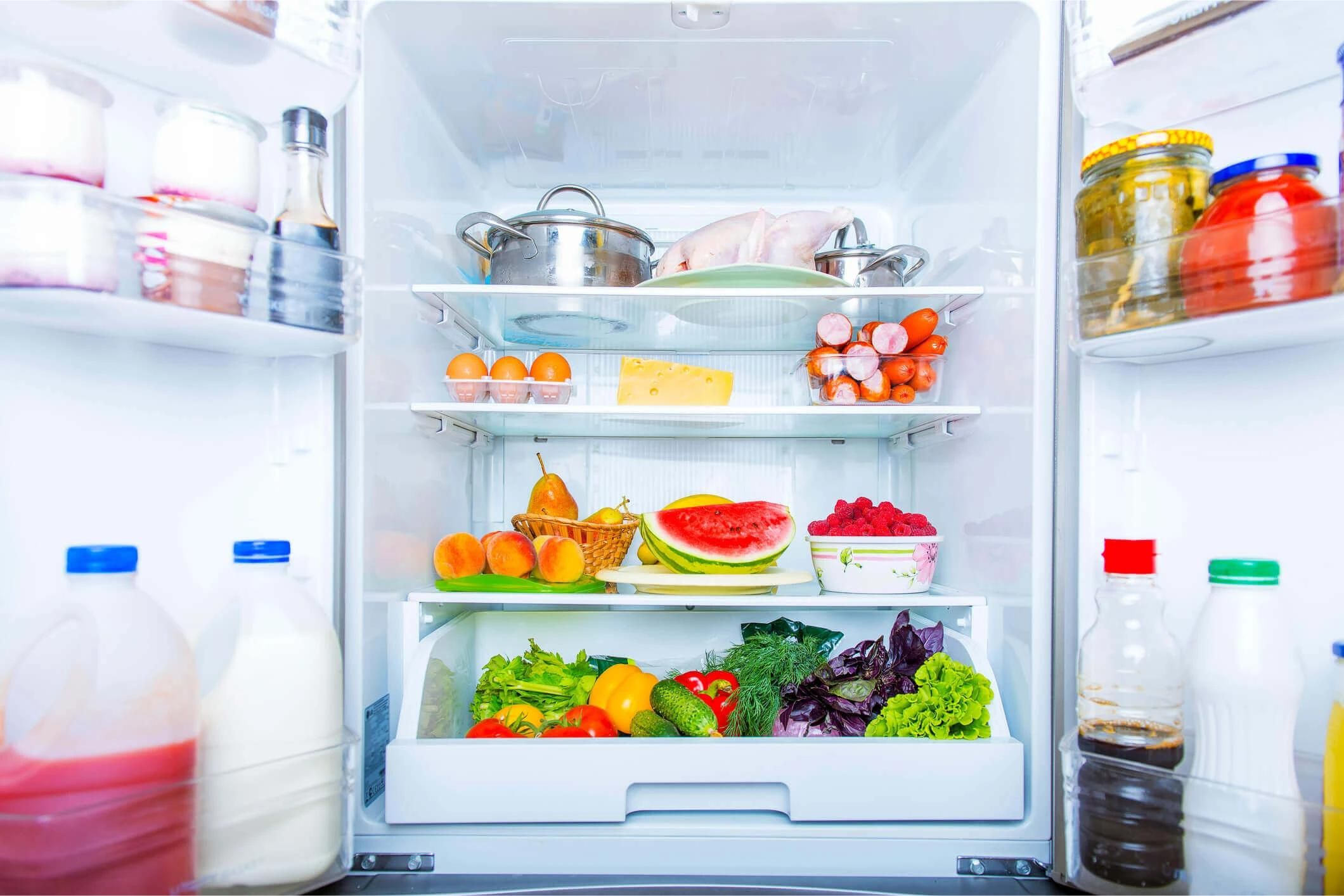
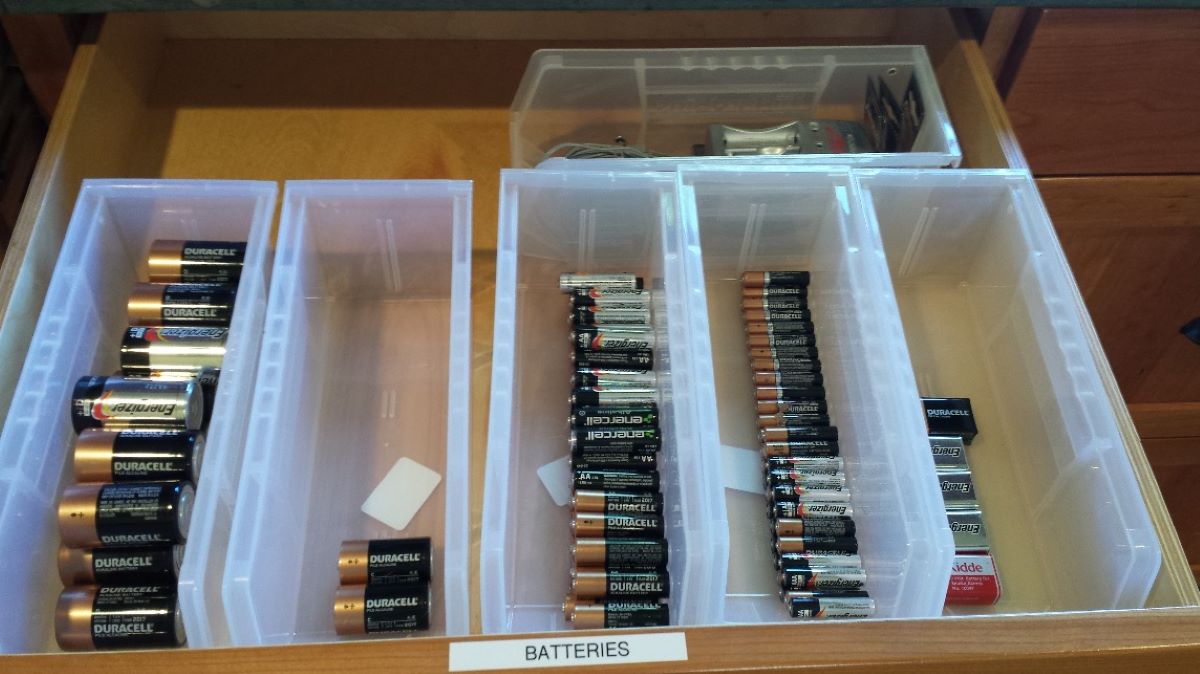
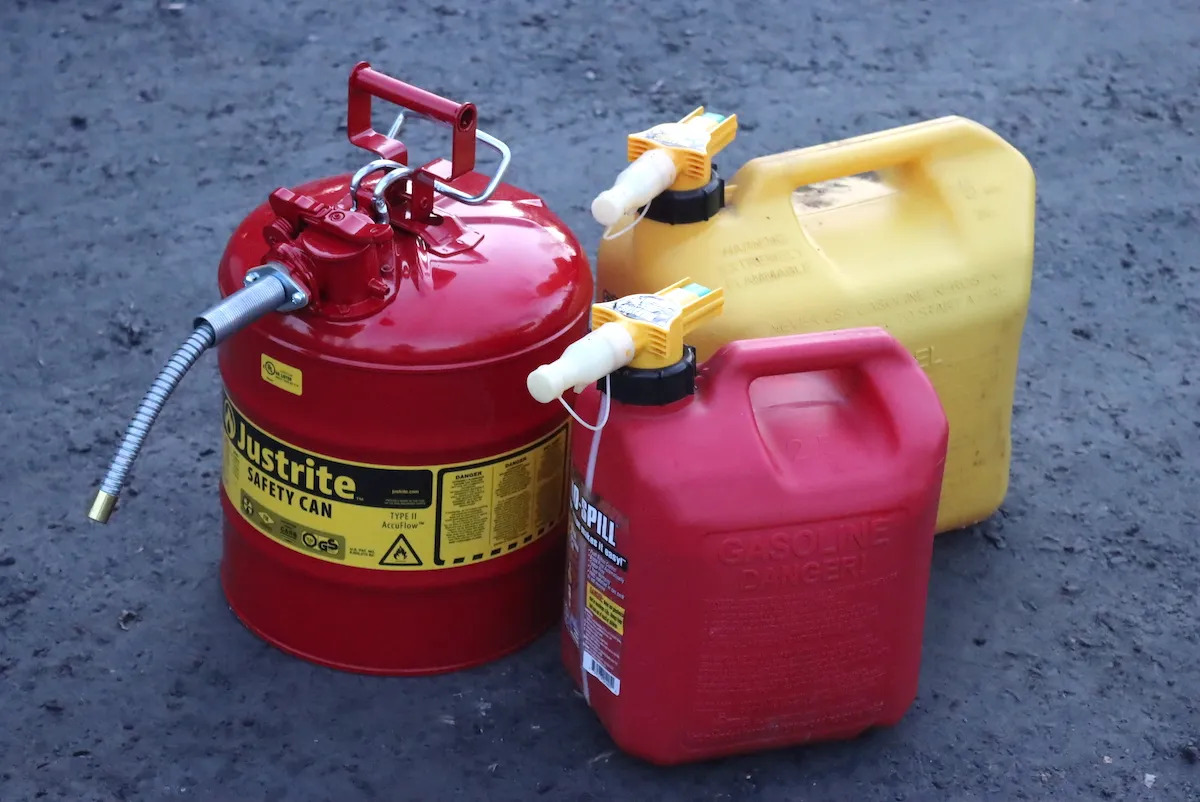
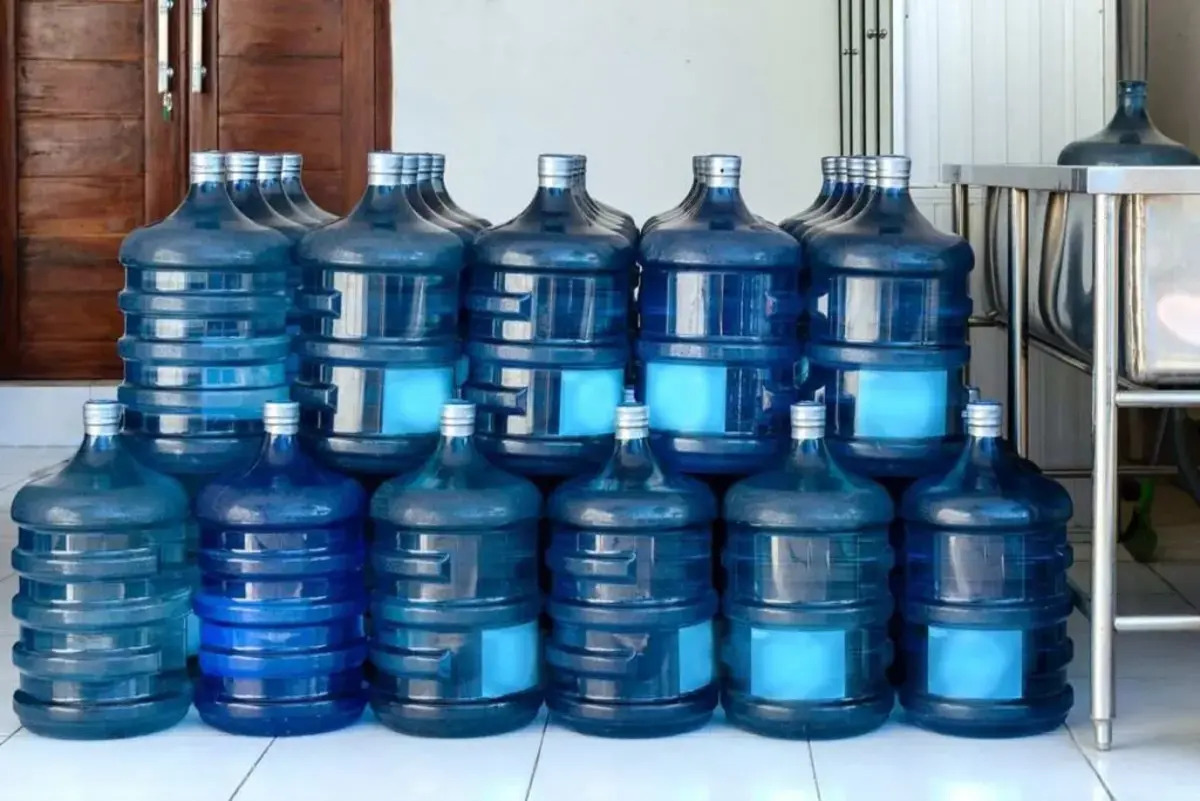

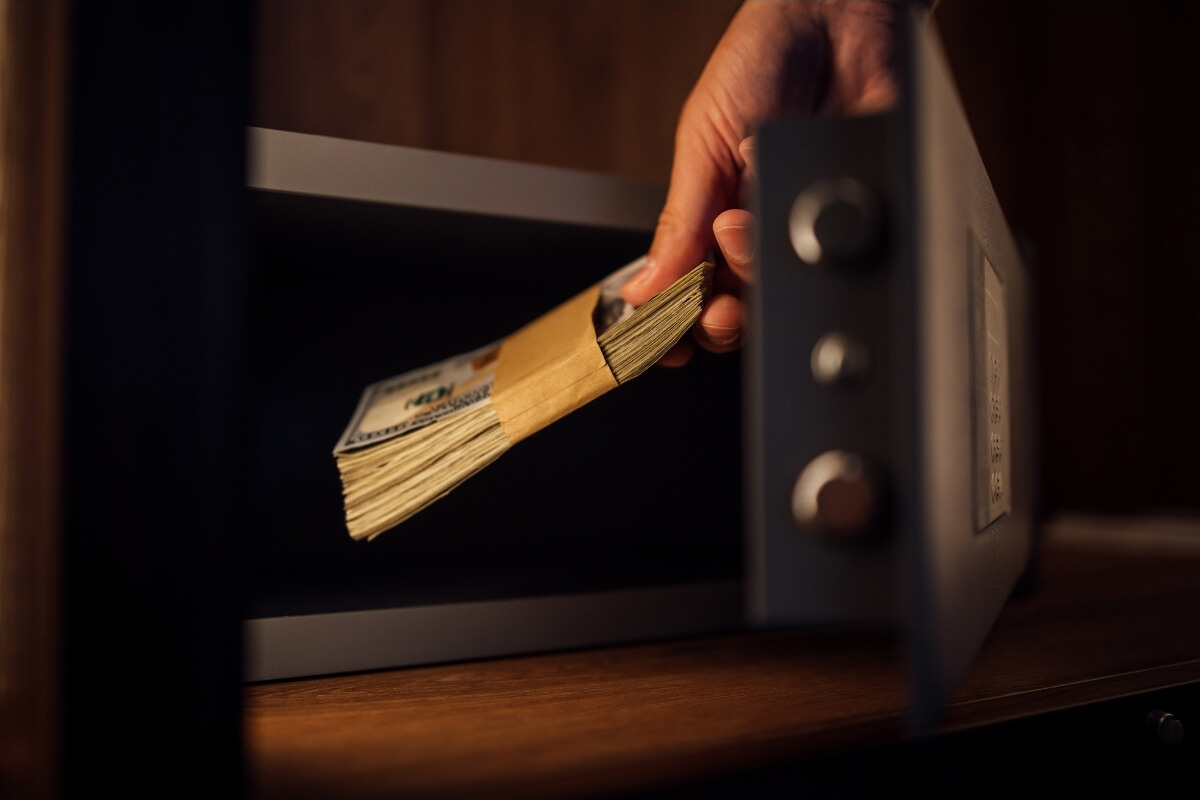

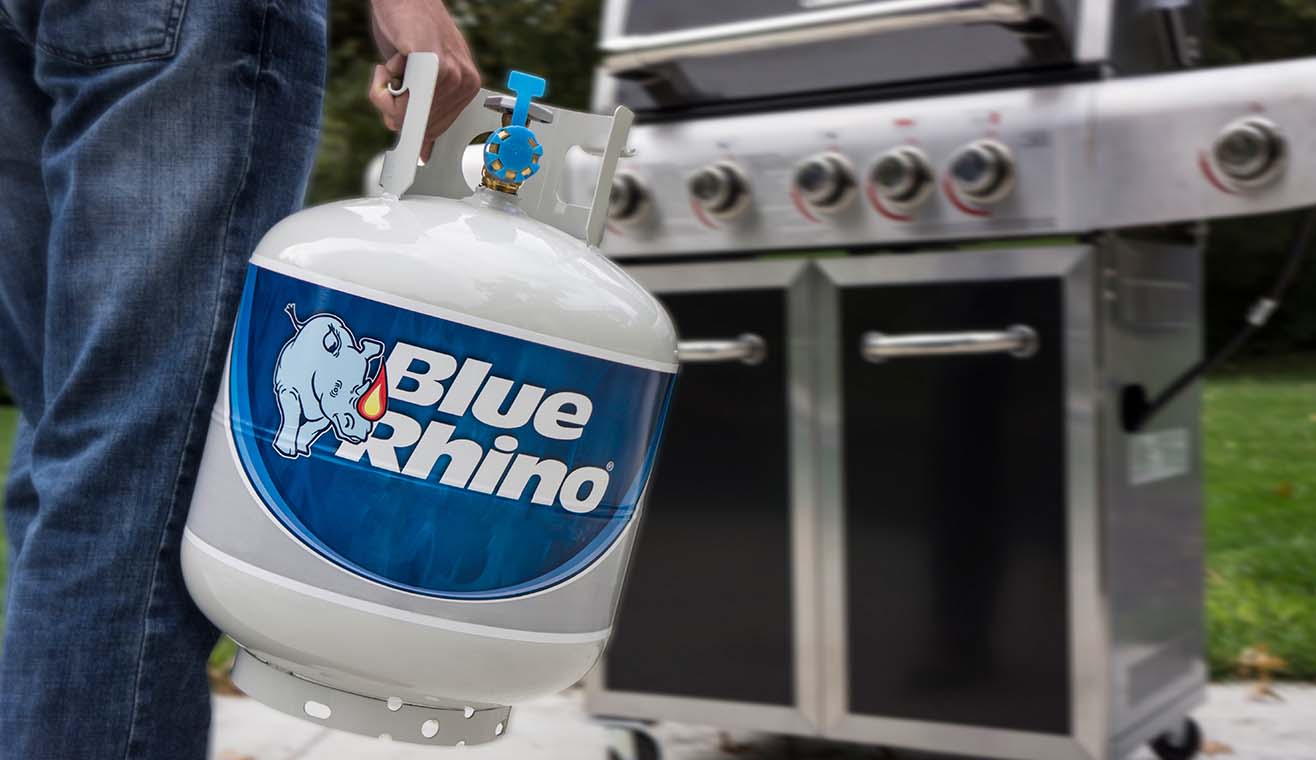
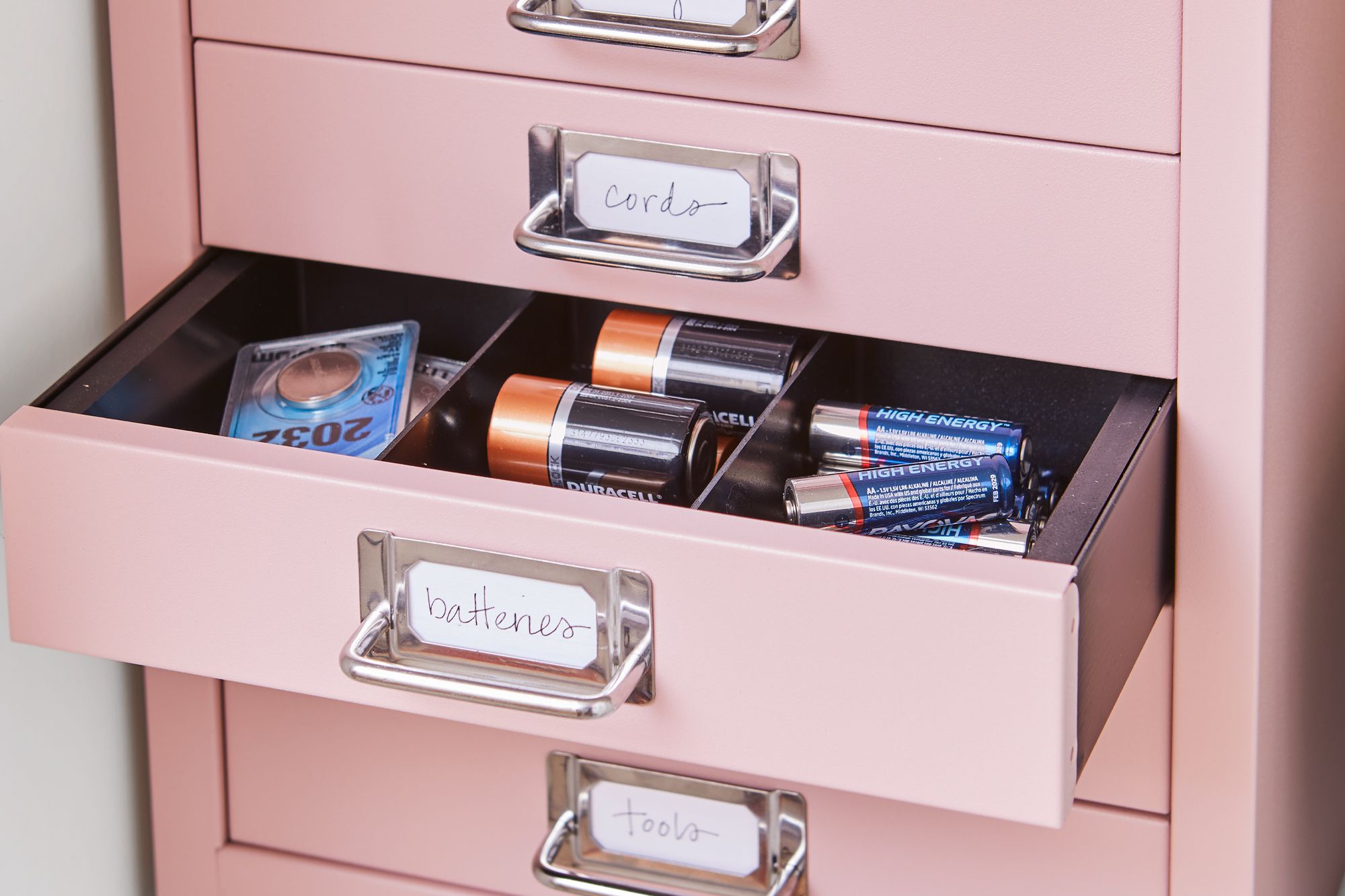
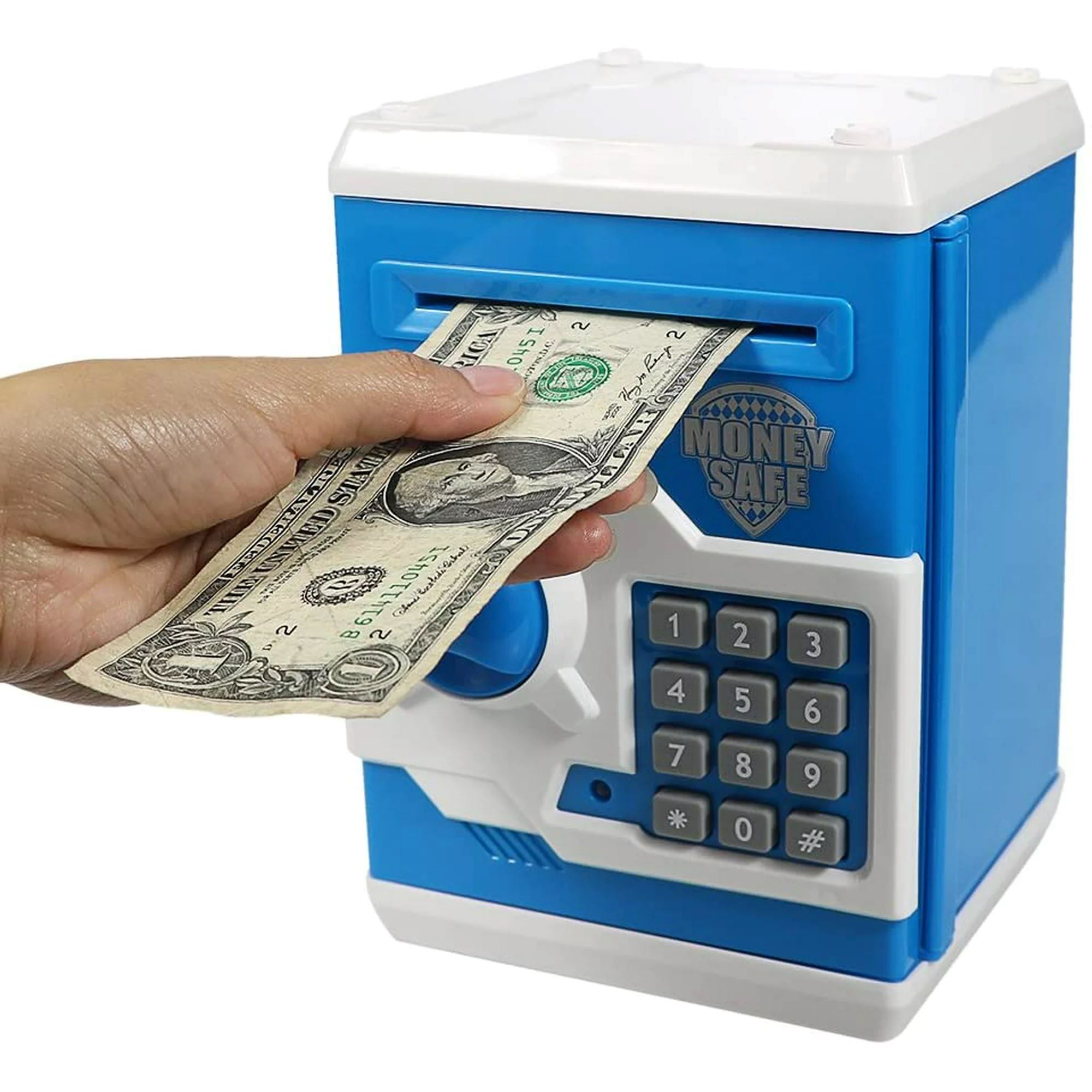
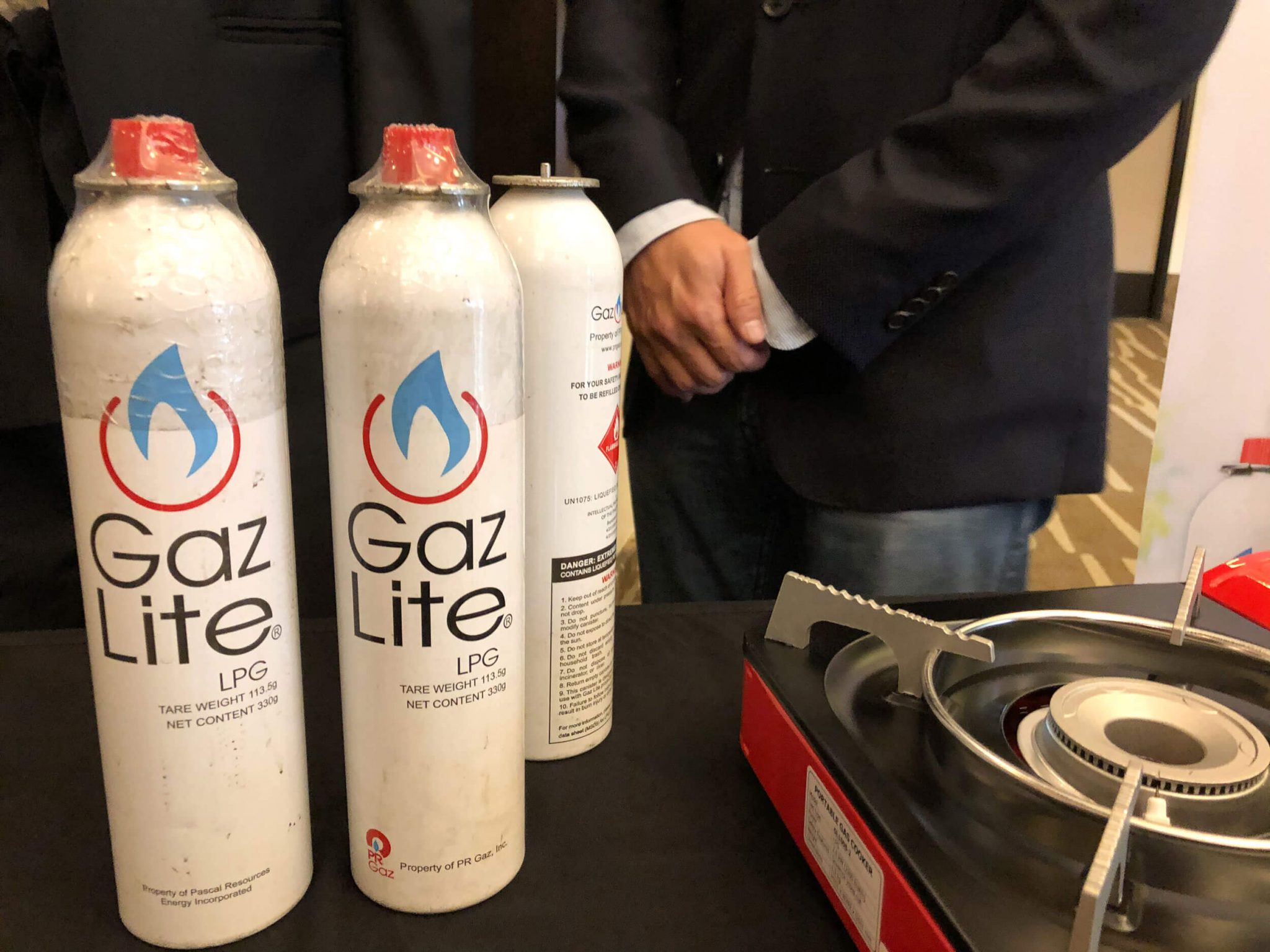

0 thoughts on “How To Store Jewelry In A Safe”